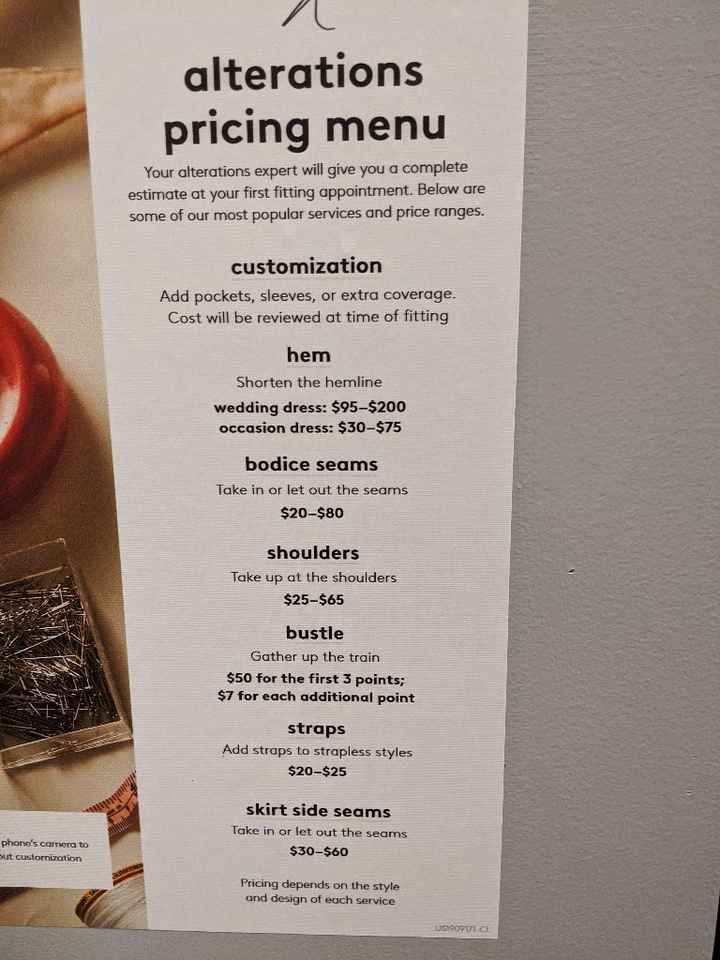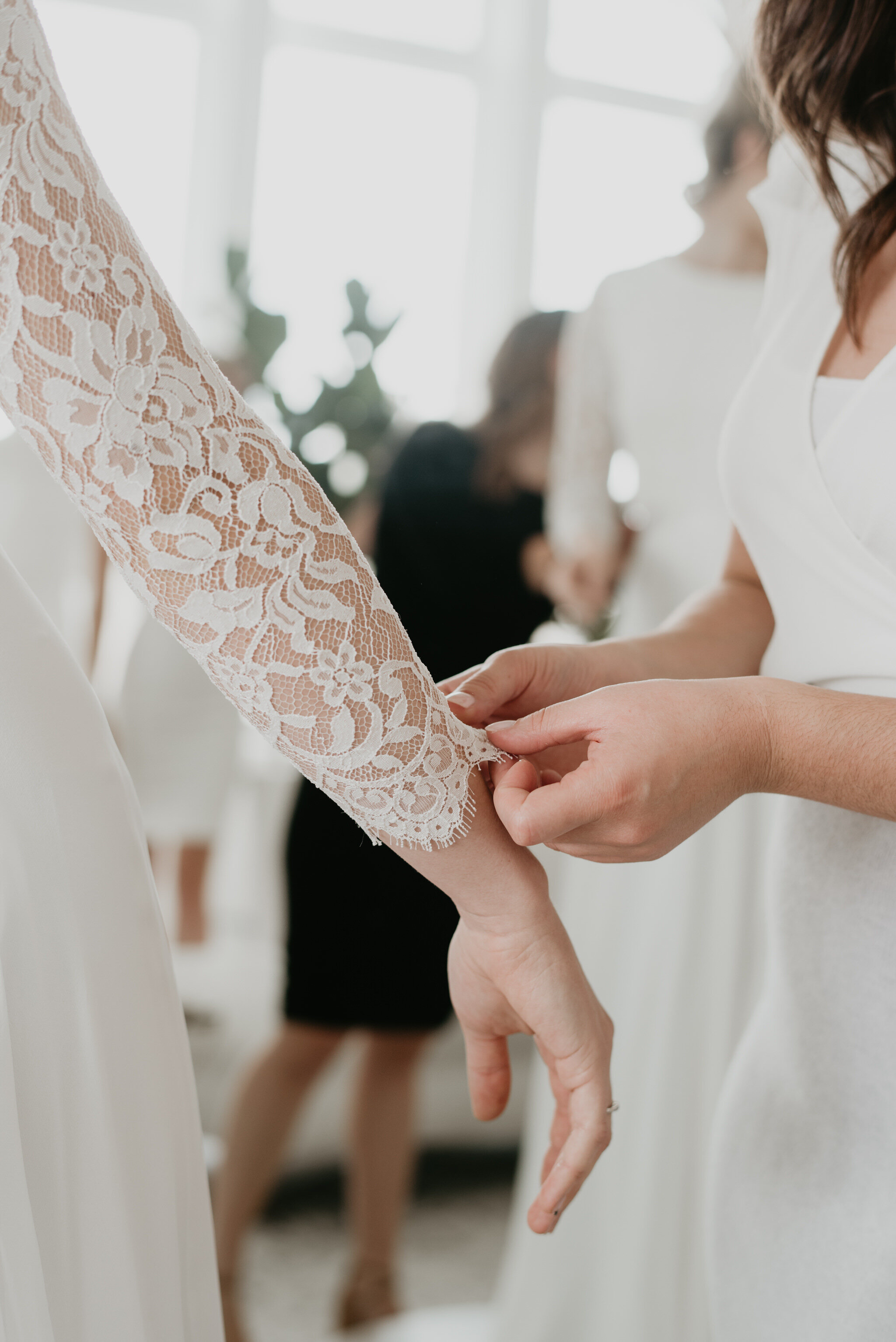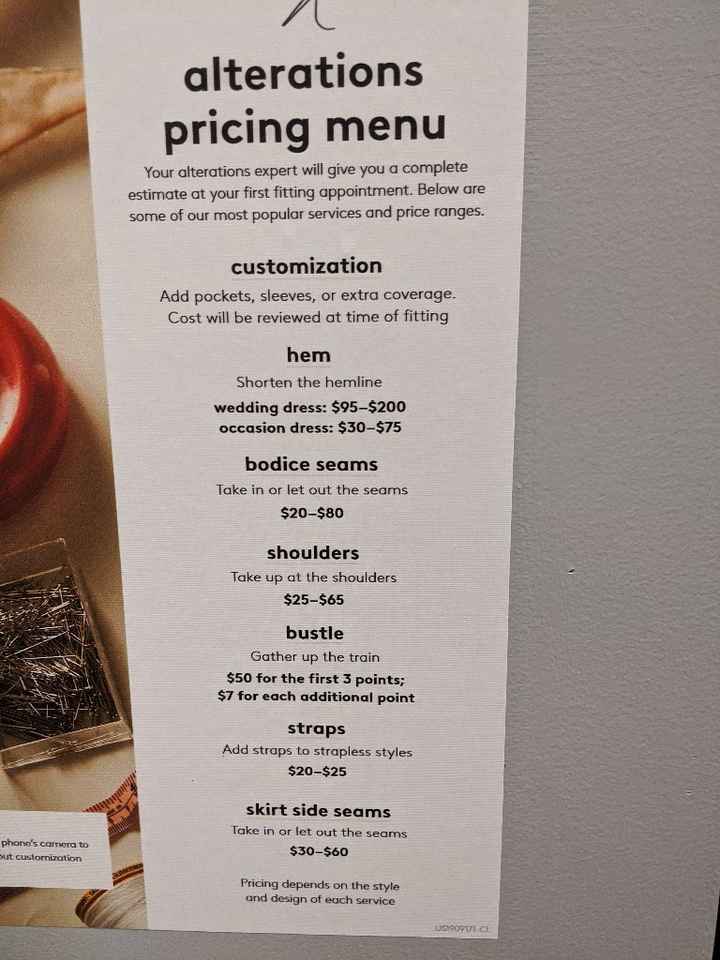Altering a wedding dress is an important part of the wedding planning process for most brides. Finding the perfect dress is just the first step. In order for it to fit just right on your big day, some alterations are usually needed. But how much do typical wedding dress alterations cost? Here’s what brides need to know about budgeting and planning for alterations.
Why Alterations Are Necessary
Very few brides can pull a dress straight off the rack and not need some type of alteration. There are a few reasons why alterations are typically necessary:
- Standard sizes don’t fit every body type
- Dresses are designed with extra room to be taken in
- You will likely lose or gain weight before the wedding
- Dresses need to be customized to properly fit your body
Unless you have a standard body shape and proportions, the dress won’t fit perfectly without tailoring. Alterations make sure the dress flatters your figure just right. From taking in the waist, bust, or hips to hemming the length, alterations make the dress look and feel like it was custom made for you.
Cost Depends On Alterations Needed
How much do dress alterations cost? Unfortunately there isn’t one standard price. The cost depends entirely on your unique alterations needs. A few factors that influence price:
- Number of alterations needed
- Complexity and detail of the dress
- Fabric type and amount needed
- Experience level of the seamstress
- Where you live (prices are higher in metro areas)
The more detailed the dress and the more work it needs, the higher your alteration costs will be. A simple sheath dress will need less work than an elaborate ballgown. The most expensive dresses to alter are often those with lots of lace, beadwork, sequins, or layers. The good news is there are some ways to save on alterations without sacrificing quality.
Average Costs of Common Alterations
While each bride’s alteration costs will be different, here are some ballpark figures for some of the most common wedding dress alterations:
Hemming – $100-$300
One of the most universal alterations for wedding dresses is having it hemmed to the perfect length. Shortening the skirt so it doesn’t drag on the floor typically costs between $100-$300 depending on the fabric and detail. A simple hem on a chiffon dress may only cost $100, while heavily beaded tulle can be $300+.
Bust Adjustments – $100-$300
It’s very common for the bust area of a wedding dress to need some tweaking. Whether it needs to be taken in or let out, altering the bodice to fit properly usually runs between $100-$300+. Complex bodices or built-in cups/corsets may be toward the higher end.
Waist Alterations – $100-$250
Cinching in the waist or sides of the dress is another typical adjustment for most brides. Simple waist alterations might start around $100, while substantial take-ins for figure flattering shaping could be up to $250.
Sleeves – $150-$500+
Adding sleeves is a popular alteration, especially for church weddings. The cost can vary greatly depending on the fabric. Basic sleeve additions start around $150. Elaborate lace sleeves can cost over $500+. Sleeves often require meticulous detail work around the armholes.
Bustles and Trains – $150+
If your dress has a long train, ask about bustling options. Sewing in bustles and hooks to tuck up the train costs $150+. Extra-long trains, volume, and fabric details can drive the price up. Bustling beaded tulle trains might cost $300+.
Factors That Increase Alteration Costs
As you budget for dress alterations, here are some specific factors that tend to increase the price:
- Lots of layers – Each layer will need individually hemmed
- Heavy fabrics like satin – More difficult to work with
- Dense fabrics like velvet – Require special needles and skill
- Lace, beading, sequins – Intricate, labor intensive
- Built-in bra or boning – Challenging to adjust
- Uncommon sizes – Petite or plus sizes may require more fabric
Dresses that check multiple boxes for labor intensive details, heavy fabrics, and special construction tend to have the highest alteration costs. The intricacy of the dress construction and embellishments is directly proportional to the price.

How To Save On Alterations
While alterations are a necessary expense, here are some smart tips to keep costs in check:
- Shop sales for budget friendly dresses
- Avoid over-embellished dresses if not in budget
- Ask which alterations will be essential versus optional
- Get quotes from a few alteration shops
- Provide your own matching fabric if needed
- Ask if rush fees can be waived
- Book early so you aren’t pressed for time
- See if your bridal salon includes basic alterations
Saving upfront on the dress leaves more room in your budget for tailoring. Avoiding ornate dresses can also keep alterations pricing low. Get quotes from both independent seamstresses as well as ones based in bridal salons. Their prices can vary greatly.
Providing your own supplemental fabric matches can also minimize costs. If you need extra length for hemming off-the rack dresses, bring your own matching tulle or chiffon to save.
You likely can’t avoid alterations altogether, but following these tips can help minimize the damage to your wedding budget.
Allot 10% Of Dress Cost For Alterations Budget
Typically seamstresses recommend budgeting around 10% of your total dress cost for alterations. While basic changes may cost less, some brides do invest 15-20% of their dress price for substantial alterations. Building this assumption into your budget from the start helps avoid financial stress later.
If your dress was $1,500, allot around $150 for alterations. For a $2,500 dress, plan around $250. If you find you need more extensive tailoring, having that 10% cushion built in provides a little wiggle room. Know where you can trim back in other areas if necessary. Of course if you land an amazing deal on a dress, that alteration allowance would shrink as well.
Where To Get Alterations Done
You have a few options of where to get wedding dress alterations performed:
- Independent local seamstresses
- Department store in-house seamstress
- Bridal salon in-house alterations team
- Specialty chains like David’s Bridal
Independent seamstresses are often the most affordable option, but may lack specialized formalwear experience. Bridal salon seamstresses will be the experts in wedding wear, but likely charge more. Quotes from both can help you decide what offers the best balance of quality and cost.
Many brides choose to have alterations done wherever they are purchasing the dress. This allows easy access to the dress for multiple fitting appointments. Seamstresses at that location are also familiar with that designer’s construction.
Ask trusted friends for first-hand referrals to alteration specialists in your area. While cost is a factor, quality workmanship is key for the big day. Make sure to see examples of previous formalwear projects when selecting who to use.
When To Schedule Alterations
Ideally you should schedule your first alteration appointment one to two months after purchasing your dress. Subsequent fittings will be scheduled in the following months leading up to your wedding.
Having the initial appointment 8-12 weeks out provides enough turnaround time for completing the work should additional tweaks be needed. Trying to cram all fittings into the final month is extremely stressful.
You’ll typically need at least two appointments spaced 4-6 weeks apart. The final fitting should be no later than three weeks before the wedding. This ensures time for last minute tweaks and avoids rush charges.
If ordering a made-to-measure gown, your first fitting won’t be for 6-8 months during production. In this case, be sure to book your seamstress in advance before the dress arrives.
Staying on top of fittings in the schedule recommended by your alteration specialist ensures everything is perfected in time for your walk down the aisle!



